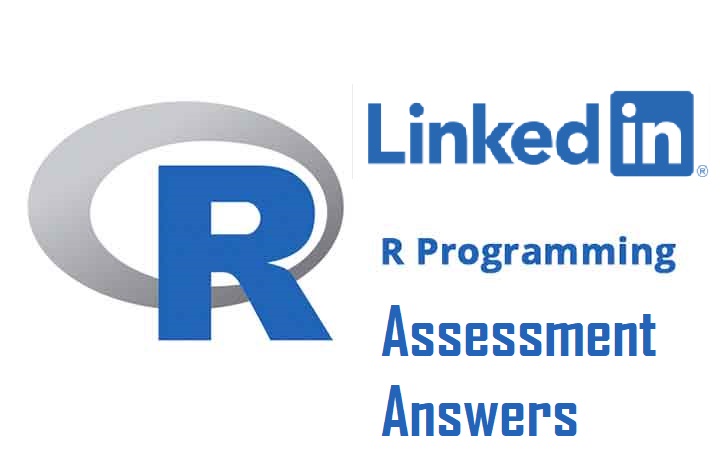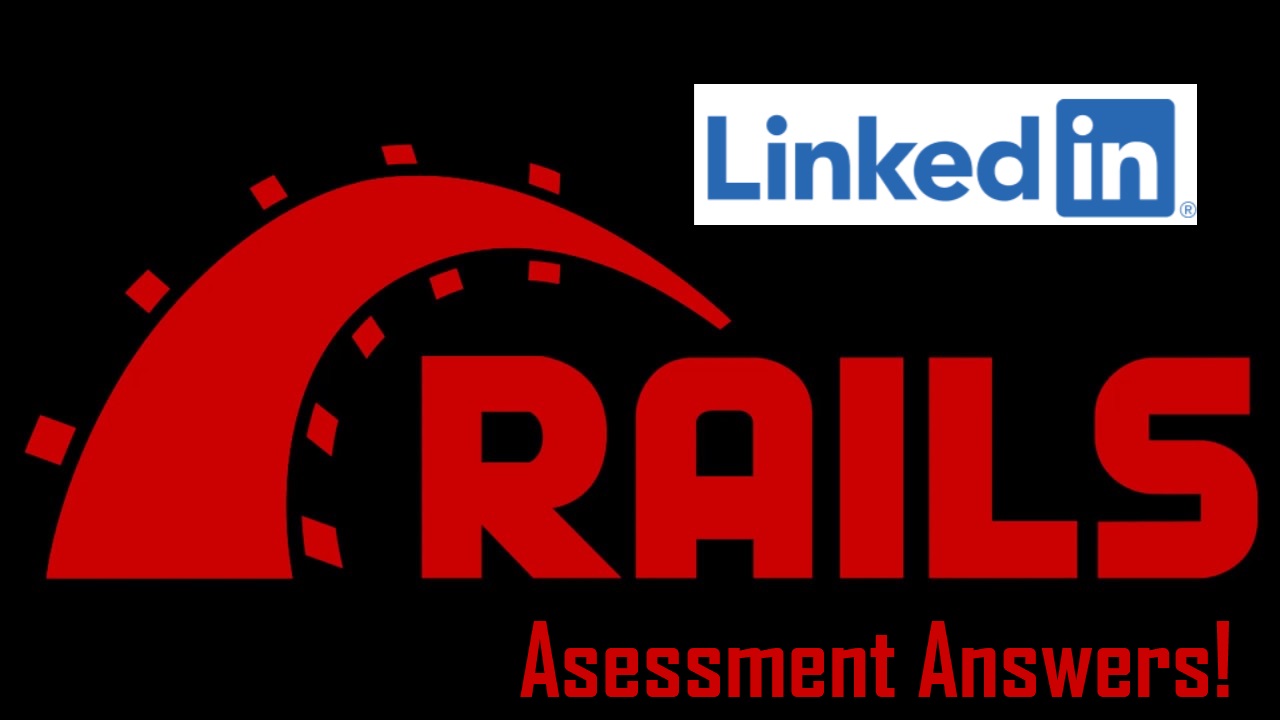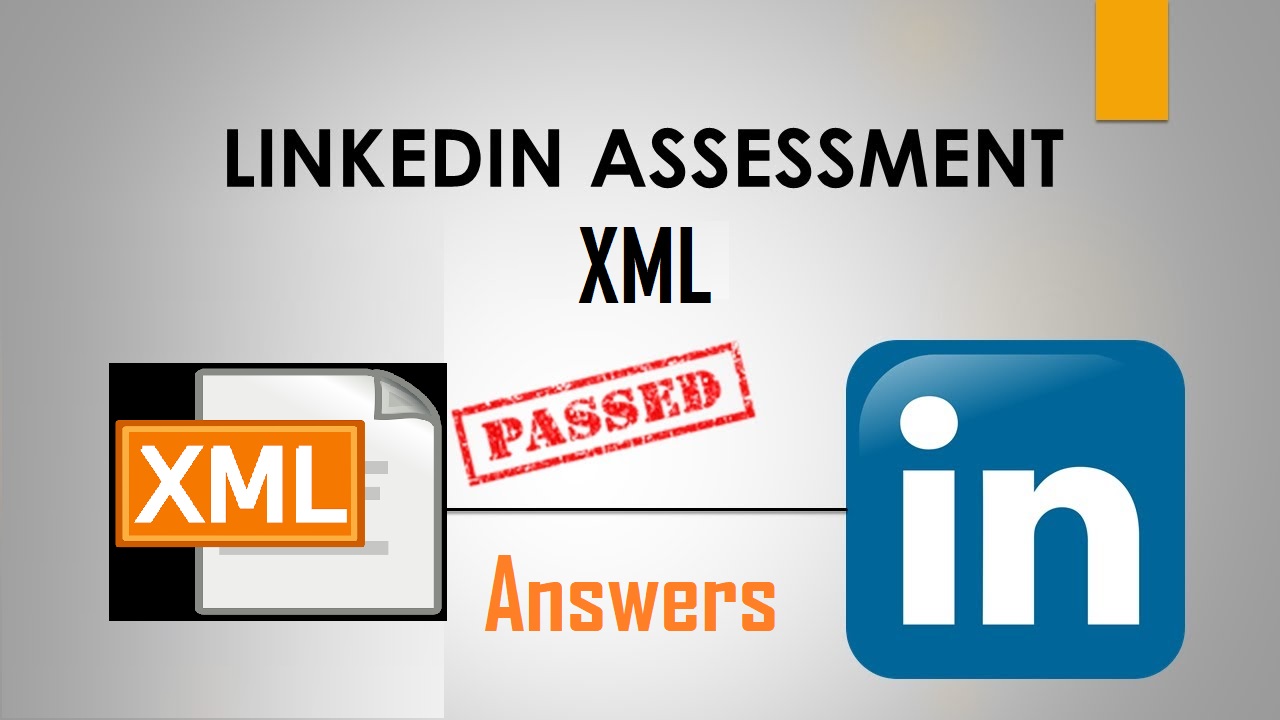R Programming Language Assessment LinkedIn Questions and Answers 2021
Q1. How does a matrix differ from a data frame?
- A matrix may contain numeric values only.
- A matrix must not be singular.
- A data frame may contain variables that have different modes.
- A data frame may contain variables of different lengths.
Q2. What value does this statement return?
unclass(as.Date("1971-01-01"))
- 1
- 365
- 4
- 12
Q3. What do you use to take an object such as a data frame out of the workspace?
- remove()
- erase()
- detach()
- delete()
Q4. Review the following code. What is the result of line 3?
xvect<-c(1,2,3)
xvect[2] <- "2"
xvect
- [1] 1 2 3
- [1] "1" 2 "3"
- [1] "1" "2" "3"
- [1] 7 9
Q5. The variable height is a numeric vector in the code below. Which statement returns the value 35?
- height(length(height))
- height[length(height)]
- height[length[height]]
- height(5)
Q6. In the image below, the data frame is named rates. The statement sd(rates[, 2]) returns 39. As what does R regard Ellen's product ratings?
- sample with replacement
- population
- trimmed sample
- sample <-- not sure
Q7. Which choice does R regard as an acceptable name for a variable?
- Var_A!
- \_VarA
- .2Var_A
- Var2_A
Q8. What is the principal difference between an array and a matrix?
- A matrix has two dimensions, while an array can have three or more dimensions.
- An array is a subtype of the data frame, while a matrix is a separate type entirely.
- A matrix can have columns of different lengths, but an array's columns must all be the same length.
- A matrix may contain numeric values only, while an array can mix different types of values.
Q9. Which is not a property of lists and vectors?
- type
- length
- attributes
- scalar
Q10. In the image below, the data frame on lines 1 through 4 is names StDf. State and Capital are both factors. Which statement returns the results shown on lines 6 and 7?
- StDf[1:2,-3]
- StDf[1:2,1]
- StDf[1:2,]
- StDf[1,2,]
Q11. Which function displays the first five rows of the data frame named pizza?
- BOF(pizza, 5)
- first(pizza, 5)
- top(pizza, 5)
- head(pizza, 5)
Q12. You accidentally display a large data frame on the R console, losing all the statements you entered during the current session. What is the best way to get the prior 25 statements back?
- console(-25)
- console(reverse=TRUE)
- history()
- history(max.show = 25)
Q13. d.pizza is a data frame. It's column named temperature contains only numbers. If u extract temperature using the [] accessors, its class defaults to numeric. How can you access temperature so that it retains the class of data.frame?
> class( d.pizza[ , "temperature" ] )
> "numeric"
- class( d.pizza( , "temperature" ) )
- class( d.pizza[ , "temperature" ] )
- class( d.pizza$temperature )
- class( d.pizza[ , "temperature", drop=F ] )
Q14. What does c contain?
a <- c(3,3,6.5,8)
b <- c(7,2,5.5,10)
c <- a < b
- [1] NaN
- [1] -4
- [1] 4 -1 -1 2
- [1] TRUE FALSE FALSE TRUE
Q15. Review the statements below. Does the use of the dim function change the class of y, and if so what is y's new class?
> y <- 1:9
> dim(y) <- c(3,3)
- No, y's new class is "array".
- Yes, y's new class is "matrix".
- No, y's new class is "vector".
- Yes, y's new class is "integer".
Q16. What is mydf$y in this code?
mydf <- data.frame(x=1:3, y=c("a","b","c"), stringAsFactors=FALSE)
- list
- string
- factor
- character vector
Q17. How does a vector differ from a list?
- Vectors are used only for numeric data, while list are useful for both numeric and string data.
- Vectors and lists are the same thing and can be used interchangeably.
- A vector contains items of a single data type, while a list can contain items of different data types.
- Vectors are like arrays, while lists are like data frames.
Q18. What statement shows the objects on your workspace?
- list.objects()
- print.objects()
- getws()
- ls()
Q19. What function joins two or more column vectors to form a data frame?
- rbind()
- cbind()
- bind()
- coerce()
Q20. Review line 1 below. What does the statement in line 2 return?
1 mylist <- list(1,2,"C",4,5)
2 unlist(mylist)
- [1] 1 2 4 5
- "C"
- [1] "1" "2" "C" "4" "5"
- [1] 1 2 C 4 5
Q21. What is the value of y in this code?
x <- NA
y <- x/1
- Inf
- Null
- NaN
- NA
Q22. Two variable in the mydata data frame are named Var1 and Var2. How do you tell a bivariate function, such as cor.test, which two variables you want to analyze?
- cor.test(Var1 ~ Var2)
- cor.test(mydata$(Var1,Var2))
- cor.test(mydata$Var1,mydata$Var2)
- cor.test(Var1,Var2, mydata)
Q23. A data frame named d.pizza is part of the DescTools package. A statement is missing from the following R code and an error is therefore likely to occur. Which statement is missing?
library(DescTools)
deliver <- aggregate(count,by=list(area,driver), FUN=mean)
print(deliver)
- attach(d.pizza)
- summarize(deliver)
- mean <- rbind(d.pizza,count)
- deliver[!complete.cases(deliver),]
Q24. How to name rows and columns in DataFrames and Matrices F in R?
- data frame: names() and rownames() matrix: colnames() and row.names()
- data frame: names() and row.names() matrix: dimnames() (not sure)
- data frame: colnames() and row.names() matrix: names() and rownames()
- data frame: colnames() and rownames() matrix: names() and row.names()
Q25. Which set of two statements-followed by the cbind() function-results in a data frame named vbound?
[ ] v1<-list(1,2,3)
v2<-list(c(4,5,6))
vbound<-cbind(v1,v2)
[ ] v1<-c(1,2,3)
v2<-list(4,5,6))
vbound<-cbind(v1,v2)
[ ] v1<-c(1,2,3)
v2<-c(4,5,6))
vbound<-cbind(v1,v2)
Q26. ournames is a character vector. What values does the statement below return to Cpeople?
Cpeople <- ournames %in% grep("^C", ournames, value=TRUE)
- records where the first character is a C
- any record with a value containing a C
- TRUE or FALSE, depending on whether any character in ournames is C
- TRUE or FALSE values, depending on whether the first character in an ournames record is C
Q27. What is the value of names(v[4])?
v <- 1:3
names(v) <- c("a", "b", "c")
v[4] <- 4
- ""
- d
- NULL
- NA
Q28. Which of the following statements doesn't yield the code output below. Review the following code. What is the result of line 3?
x <- c(1, 2, 3, 4)
Output: [1] 2 3 4
- x[c(2, 3, 4)]
- x[-1]
- x[c(-1, 0, 0, 0)]
- x[c(-1, 2, 3, 4)]
Q29. Given DFMerged <- merge(DF1, DF2) and the image below, how manu rows are in DFMerged?
DF1(data frame 1): DF2(data frame 2):
VarA VarB VarA VarD
1 1 2 1 18 21
2 4 5 2 19 22
3 7 8 3 20 23
- 6
- 9
- 3
- 0





